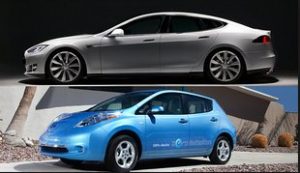House bill would remove tax credit: A proposal by House Republicans to eliminate the $7,500 federal tax incentive could be a blow to sales of electric cars that are being marketed for affo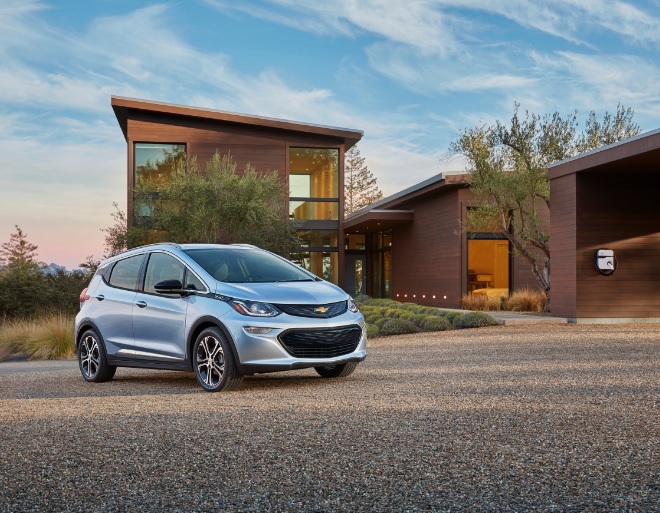 rdability. As part of the tax overhaul bill proposed to House Ways and Means Committee on Thursday, the repeal would take effect at the end of 2017. The Senate is working on its own version of a tax overhaul. General Motors is asking legislators to repeal that part of the bill and other automakers are likely to join in with the bill expected to hurt efforts to bring in more consumers as electric vehicle buyers. “That will stop any electric vehicle market in the U.S., apart from sales of the highly expensive Tesla Model S,” said Xavier Mosquet, senior partner at consultant Boston Consulting Group. “There’s no Tesla 3, no Bolt, no Leaf in a market without incentives.”
rdability. As part of the tax overhaul bill proposed to House Ways and Means Committee on Thursday, the repeal would take effect at the end of 2017. The Senate is working on its own version of a tax overhaul. General Motors is asking legislators to repeal that part of the bill and other automakers are likely to join in with the bill expected to hurt efforts to bring in more consumers as electric vehicle buyers. “That will stop any electric vehicle market in the U.S., apart from sales of the highly expensive Tesla Model S,” said Xavier Mosquet, senior partner at consultant Boston Consulting Group. “There’s no Tesla 3, no Bolt, no Leaf in a market without incentives.”
All-electric vehicle demand will leap in near future: Battery electric vehicles will make up a much larger share of global vehicle production and sales, but not for a few years, according to a new study released yesterday by Boston Consulting Group. EVs won’t see much serious growth until after 2025 and will likely make up about 14% of global vehicle production by 2030 after reaching about 6% in 2025, the study said. That will be a huge leap from its current level, at about 1% of global new vehicle sales. Incentives like the $7,500 federal tax credit will be needed for now, but that will eventually go away. The study’s authors said that improved battery technology, lower costs, and government mandates will be the drivers of greater consumer demand. Market forces will take over by 2030. “Eventually, we’ll reach a point where we don’t need incentives anymore,” said Xavier Mosquet, BCG senior partner and lead author of the study.
Fast charging comes to Europe: An alliance of automakers will be deploying about 400 fast charging stations across Europe by 2020. BMW, Daimler, Ford, and Volkswagen with its Audi and 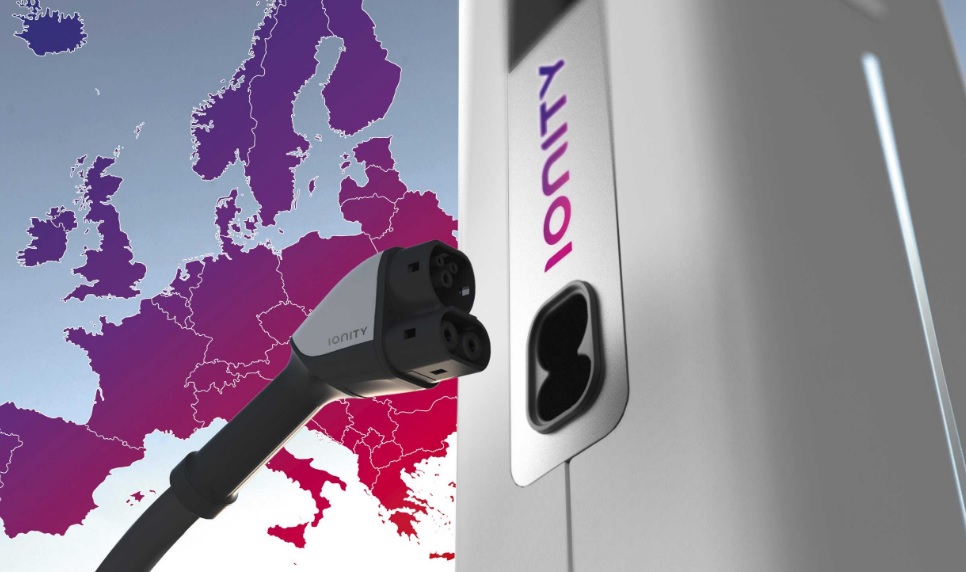 Porsche subsidiaries have formed a joint venture called IONITY to carry it out. The High-Power-Charging (HPC) network will install chargers that will have the capacity to go up to 350 kW and will use the brand-agnostic Combined Charging System as the standard. Automakers hope the wide distribution of the fast chargers will make electric vehicles more appealing for consumers. This year will see 20 of these HPC stations installed. The IONITY joint venture is based in Munich and led by CEO Michael Hajesch, who expects to see 50 employees in place by early 2018. “The first pan-European HPC network plays an essential role in establishing a market for electric vehicles. IONITY will deliver our common goal of providing customers with fast charging and digital payment capability, to facilitate long-distance travel,” Hajesch said.
Porsche subsidiaries have formed a joint venture called IONITY to carry it out. The High-Power-Charging (HPC) network will install chargers that will have the capacity to go up to 350 kW and will use the brand-agnostic Combined Charging System as the standard. Automakers hope the wide distribution of the fast chargers will make electric vehicles more appealing for consumers. This year will see 20 of these HPC stations installed. The IONITY joint venture is based in Munich and led by CEO Michael Hajesch, who expects to see 50 employees in place by early 2018. “The first pan-European HPC network plays an essential role in establishing a market for electric vehicles. IONITY will deliver our common goal of providing customers with fast charging and digital payment capability, to facilitate long-distance travel,” Hajesch said.

 March 21, the rebate program has helped plug-in electrified vehicle sales go up from 1,476 to 2,574 units year-over-year. Most people are receiving rebates of $1,100 or more, with $3 million having been set aside by the state to fund the program through participating dealers (with Tesla not qualifying for the incentive program). More than 40% of the funds have gone to Toyota Prius Prime purchases, with the Chevy Bolt coming in second at 12%, and the Chevy Volt and Ford Fusion Energi each getting 10% of the funds. It’s all part of Gov. Cuomo’s move to reduce greenhouse gas emissions 40% by 2030. The state is also supporting growing its public charging infrastructure – from about 1,700 chargers currently available to about 3,000 in 2018.
March 21, the rebate program has helped plug-in electrified vehicle sales go up from 1,476 to 2,574 units year-over-year. Most people are receiving rebates of $1,100 or more, with $3 million having been set aside by the state to fund the program through participating dealers (with Tesla not qualifying for the incentive program). More than 40% of the funds have gone to Toyota Prius Prime purchases, with the Chevy Bolt coming in second at 12%, and the Chevy Volt and Ford Fusion Energi each getting 10% of the funds. It’s all part of Gov. Cuomo’s move to reduce greenhouse gas emissions 40% by 2030. The state is also supporting growing its public charging infrastructure – from about 1,700 chargers currently available to about 3,000 in 2018. CEO announced Friday. The company has shrunk the size of the spaceship to make the intergalactic journey. Construction of the new ship will begin the first half of next year, he said, and it will be able to carry up to 100 passengers. SpaceX thinks it will be available to also carry passengers around the world in ultra-fast flights – such as New York to Shanghai in 39 minutes. SpaceX is one of several companies planning on taking trips to the red planet. Lockheed Martin Corp. announced its own plans for a manned Mars journey on Friday. Amazon.com founder Jeff Bezos’ Blue Origin space travel startup is also designing a ship that will be capable of trips to Mars. Virgin Galactic founder and billionaire Richard Branson thinks that Mars should be colonized and his intergalactic division can provide transportation.
CEO announced Friday. The company has shrunk the size of the spaceship to make the intergalactic journey. Construction of the new ship will begin the first half of next year, he said, and it will be able to carry up to 100 passengers. SpaceX thinks it will be available to also carry passengers around the world in ultra-fast flights – such as New York to Shanghai in 39 minutes. SpaceX is one of several companies planning on taking trips to the red planet. Lockheed Martin Corp. announced its own plans for a manned Mars journey on Friday. Amazon.com founder Jeff Bezos’ Blue Origin space travel startup is also designing a ship that will be capable of trips to Mars. Virgin Galactic founder and billionaire Richard Branson thinks that Mars should be colonized and his intergalactic division can provide transportation. committed to meeting the “EV100” campaign. Member companies will be transitioning from gasoline and diesel vehicles to EVs and a charging infrastructure by 2030. These companies will set out timetables for rolling over their fleets. They’re convinced it will help drive EV adoption, reduce costs, and make electric cars more affordable in markets around the world. It follows two other initiatives led non-profit organization The Climate Group – RE100, which seeks to accelerate the adoption of 100% renewable energy targets; and EP100, which aims to increase the number of companies doubling their energy productivity.
committed to meeting the “EV100” campaign. Member companies will be transitioning from gasoline and diesel vehicles to EVs and a charging infrastructure by 2030. These companies will set out timetables for rolling over their fleets. They’re convinced it will help drive EV adoption, reduce costs, and make electric cars more affordable in markets around the world. It follows two other initiatives led non-profit organization The Climate Group – RE100, which seeks to accelerate the adoption of 100% renewable energy targets; and EP100, which aims to increase the number of companies doubling their energy productivity.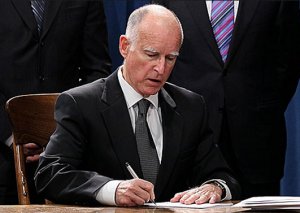 Project specifically targeted to low-income applicants, and $100 million will go to light-duty equity pilot projects. About $180 million will go to the state’s Hybrid and Zero-Emission Truck and Bus Voucher Incentive Project (HVIP). That program offers incentive dollars for the purchase of electric and fuel cell vehicles and ultra low-NOx natural gas technologies. Another $250 million is being directed to the state’s air quality management and air pollution control districts through the Carl Moyer Memorial Air Quality Standards Attainment Program. That state program started in 1998 and is aimed at helping fleets and individuals switch over to clean trucks, school buses, transit buses, and other vehicles.
Project specifically targeted to low-income applicants, and $100 million will go to light-duty equity pilot projects. About $180 million will go to the state’s Hybrid and Zero-Emission Truck and Bus Voucher Incentive Project (HVIP). That program offers incentive dollars for the purchase of electric and fuel cell vehicles and ultra low-NOx natural gas technologies. Another $250 million is being directed to the state’s air quality management and air pollution control districts through the Carl Moyer Memorial Air Quality Standards Attainment Program. That state program started in 1998 and is aimed at helping fleets and individuals switch over to clean trucks, school buses, transit buses, and other vehicles.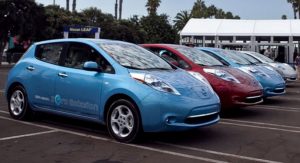 Colorado EV incentive: Colorado, which has long been an electric vehicle friendly state, is switching over from a formula-based tax credit to
Colorado EV incentive: Colorado, which has long been an electric vehicle friendly state, is switching over from a formula-based tax credit to 
